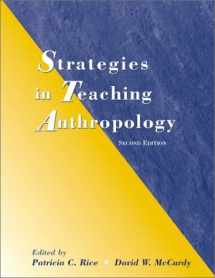
Strategies in Teaching Anthropology (2nd Edition)
Book details
Summary
Description
The first of its kind to focus on the “how” of teaching anthropology across all of its sub-fields (Cultural-Social, Biological, Archaeology, and Linguistics), this unique reference tool features over 30 hands-on, experiential strategies and teaching “tricks of the trade” from some of today's most seasoned anthropology instructors. Provides a wide array of associated learning outcomes, team work strategies, and activities that have proven successful in the classroom, and shows how to clearly explain anthropological perspectives that contradict everyday experience and establish social categories, such as the social construction of race. Part I: General contains articles of tried-and-true strategies that are particularly appropriate for students' first exposure to anthropology and college classrooms in general; Part II: Biological Anthropology and Archaeology contains teaching tips to help students understand the complex issues through activities and props very familiar to them—e.g., “'First Steps' in Hominid Evolution: A Lesson on Walking” encourages development of critical thinking skills around the deceptively simple art of walking, which actually turns out to be an extremely complex phenomenon; Part III: Cultural Anthropology contains strategies that involve a series of activities that challenge the familiar and reveal that which is masked or often covert—e.g., explores gender differences in a very visual way by using children's television commercials to analyze gender enculturation. Devotes four articles to ethnography teaching strategies. For anthropology instructors.


We would LOVE it if you could help us and other readers by reviewing the book
Book review



